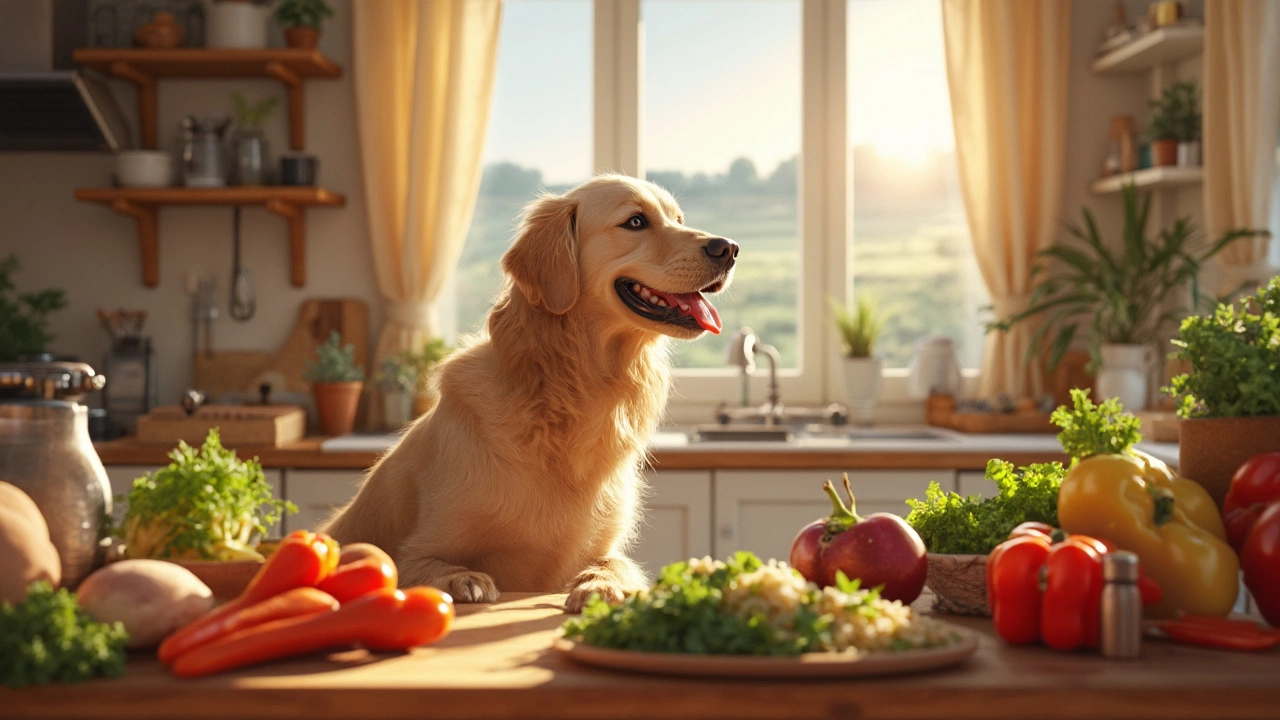Safe Dog Meals: Easy, Healthy Recipes Your Pup Will Love
Feeding your dog a safe, balanced meal doesn’t have to be a chore. Knowing which ingredients are harmless, how to combine them, and where to store the food makes home‑cooked meals a breeze. Below you’ll get the basics on safety, a couple of quick recipes, and practical tips to keep every bite nutritious.
What Makes a Meal Safe?
First, ditch anything toxic. Chocolate, grapes, onions, garlic, and macadamia nuts are a no‑go. Even small amounts of xylitol (found in sugar‑free gum) can cause seizures. Stick to fresh meat, plain veggies, and limited grains.
Second, aim for a 40‑30‑30 split: 40% protein, 30% carbs, 30% vegetables. This mirrors what most vets recommend for adult dogs. A good rule of thumb is one cup of cooked protein per 20 lbs of body weight, plus a half cup of carbs and a quarter cup of veggies.
Third, watch for allergens. If your dog shows itching, ear infections, or tummy upset after a new food, pause and try a simpler recipe. Keep a food diary for a week to spot patterns.
Quick Homemade Recipes
Turkey & Sweet Potato Mix
- 1 lb ground turkey (no seasonings)
- 1 large sweet potato, peeled and diced
- ½ cup green beans, chopped
- 1 tsp olive oil
Cook turkey in a pan until browned. In a separate pot, steam sweet potato and green beans until soft. Mix everything together, drizzle oil, and let cool before serving. This dish provides lean protein, beta‑carotene, and fiber.
Chicken & Rice Delight
- 1 lb skinless chicken breast, boiled and shredded
- 1 cup brown rice, cooked
- ½ cup carrots, grated
- ¼ tsp salmon oil (optional)
Combine cooked chicken, rice, and carrots. Add salmon oil for omega‑3s if your dog needs a coat boost. Serve warm or at room temperature.
Both recipes store well in the fridge for three days or in the freezer for up to two months. Portion out into daily servings to avoid over‑feeding.
When you’re ready to switch meals, do it gradually over five days. Mix a small amount of the new food with the old, increasing the new portion each day. This helps digestion and keeps your dog happy.
Remember to supplement with a high‑quality multivitamin if your homemade meals lack specific nutrients like calcium or zinc. Most vets recommend a daily chewable or powder added to the food.
Finally, always offer fresh water. Even the healthiest meal won’t work if your dog is dehydrated.
With these guidelines, you can whip up safe, tasty meals that match your dog’s needs. No fancy gadgets, just simple ingredients and a bit of love. Your pup will thank you with a wagging tail and a shiny coat.

Best Homemade Dog Food: What to Feed Your Pup Safely
Thinking about making your dog's meals at home? This article breaks down what homemade food really works best for dogs, which ingredients you should use or avoid, and how to make sure your pup is getting all the nutrients they need. Get easy, practical recipes and pro tips to keep your dog healthy. Learn what vets usually recommend and get answers to common questions real dog owners have. Skip the guesswork and help your furry friend thrive with every meal.
View more